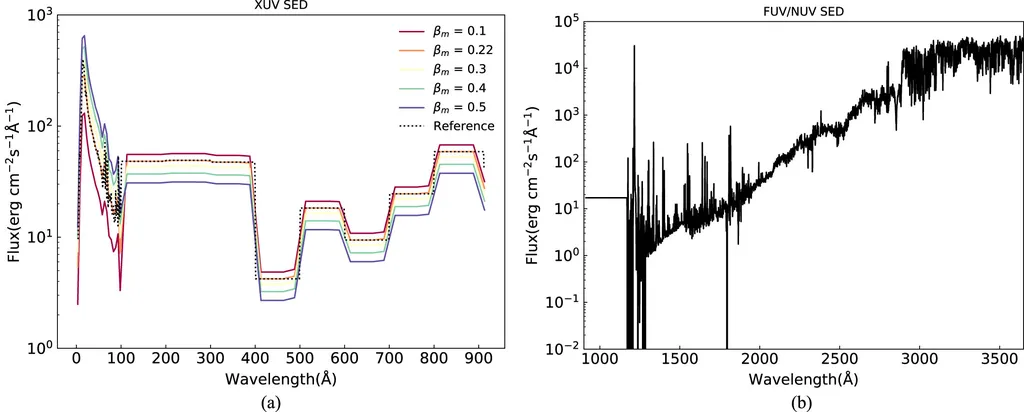Renata Frelikh and Ruth A. Murray-Clay, researchers from the California Institute of Technology, have delved into the intricate processes of atmospheric escape from exoplanets, specifically hot Jupiters and super-Earths. Their work, published in the Astrophysical Journal, offers valuable insights that could have implications for understanding the evolution of exoplanetary atmospheres and, by extension, the energy dynamics of these distant worlds.
The researchers developed a sophisticated one-dimensional model to simulate the escape of hydrogen and helium from hot Jupiters, driven by extreme-ultraviolet (EUV) radiation from their host stars. The model incorporates various physical processes, including heating and ionization by stellar radiation, radiative cooling by Lyman-α and H₃⁺, heat conduction, tidal gravity, and a hydrogen-helium reaction network. Additionally, the model accounts for the secondary ionization of species by photoelectrons.
For a typical hot Jupiter, the model reveals a three-layer structure in the escaping atmosphere. At the base, there is a layer of molecular hydrogen cooled by H₃⁺. This is enveloped by a layer of neutral hydrogen cooled by Lyman-α radiation, which then transitions into an ionized wind layer that is cooled by adiabatic expansion. The most energetic photons are absorbed in the molecular layer, where H₃⁺ plays a significant role in radiative cooling after accounting for energy loss via photoelectrons and ionization.
The researchers conducted a series of simulations, varying the distance of the planet from its host star. They found that heat conduction at the base of the atmosphere becomes significant at distances greater than approximately 0.2 astronomical units (au). This increases the H₃⁺ cooling relative to the EUV input flux. As the planet moves further from the star, the outflow becomes increasingly neutral, with neutral hydrogen decoupling from the ionized outflow and free-streaming out.
In simulations of mini-Neptunes or super-Earths with pure hydrogen-helium atmospheres, the outflows were found to be significantly cooler. This allows molecules to survive throughout the outflow, suggesting that molecular cooling plays a crucial role in determining whether these planets can maintain massive atmospheres.
The findings provide a framework for understanding the impact of molecular radiative cooling on atmospheric outflows. This research could help energy scientists better understand the energy dynamics of exoplanetary atmospheres and the processes driving atmospheric escape. While the direct practical applications for the energy industry are not immediately apparent, the study contributes to our broader understanding of planetary systems and the fundamental processes governing their evolution. This knowledge could indirectly inform energy research, particularly in areas related to planetary exploration and the search for habitable environments beyond Earth.
Source: Astrophysical Journal
This article is based on research available at arXiv.

